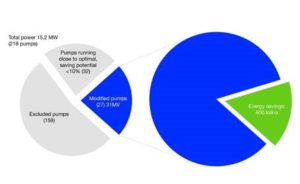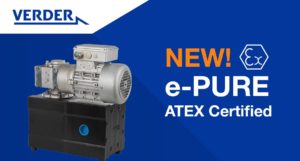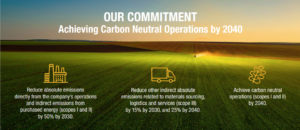Two Additional Variable Speed Pump Ranges Launched by Armstrong
Armstrong has launched two ranges of pumps under its new Design Envelope category – the Series 4300 IVS vertical inline pump range and the Series 4302 dualARM IVS pump designs.

Armstrong
Specifically developed to reduce project risk and lifecycle costs, the new Armstrong Design Envelope pumps can accommodate reasonable changes in operational demands in the future without the expense of replacement, or a drop in energy efficiency performance.
The pumps are purpose-designed with a built-in safety net which means that the system designer does not have to trade-off the energy efficiency of the installation by over-sizing equipment “to be on the safe side”. The pumps feature Armstrong’s well established integrated ‘Sensorless’ control technology. This adjusts the pump operation automatically to deliver high operating efficiency at all times, including at part loads, ensuring that the pump always delivers the optimum performance – whatever changes may occur during construction, or in occupancy of the building in the future.
Both the Series 4300 IVS vertical inline pump range and the Series 4302 dualARM IVS pumps feature on-board frequency converter technology which automatically calculates the required changes in pump speed to meet demand. Embedded within the memory of the inverter’s speed controller are pump performance curves for the complete range of operating speeds. This data is programmed in at the factory during manufacture of the pump and includes power, pressure and flow across the flow range of that specific pump. So, as long as the controller can identify the power and speed of the pump, it can carry out the necessary calculations to determine the hydraulic performance and position in the pump’s head-flow characteristics. The speed controller then regulates the pump accordingly to ensure that only the required energy for its current base-load is used.
In many applications the integral sensorless control means there is no need to supply, install, and wire a remotely mounted pressure transducer. For more complex applications such as multi-pump and multi-zone control, the Design Envelope HVAC pumping units can be controlled by an Armstrong IPS (Integrated Pumping System) or a BMS (Building Management System).
During 2009 Armstrong will be re-designing many of its most popular product ranges to suit the Design Envelope system specification approach. Product selection for Design Envelope products is very simple. The system designer just marks the preliminary design flow and head requirements on the Design Envelope chart (shown in the product brochure, on the website, and included in ACE Online selection software). Then he or she selects the Design Envelope that best represents the design parameters allowing a comfortable safety margin in the flow and head to cover any anticipated increases or reductions in design demand from design errors or building modifications during construction, or changes in building occupancy in the future.
The two new Design Envelope pump ranges include single and dual-head (with parallel pumping capability) off-site manufactured pump packages, fully-assembled complete with pump, motor, drive and built-in controls, with a range of motor sizes up to 55kW. Benefits include reduced capital, installation, and commissioning costs, a smaller footprint, and automatically-achieved energy savings without added system cost and complexity. These benefits are in addition to the reduced project risk made possible by the Design Envelope approach. The pumps also feature split-coupled seal arrangements (enabling pump seals to be serviced without removing the motor or drive) for ease of maintenance and lower lifecycle costs.
Source: Armstrong Fluid Technology







